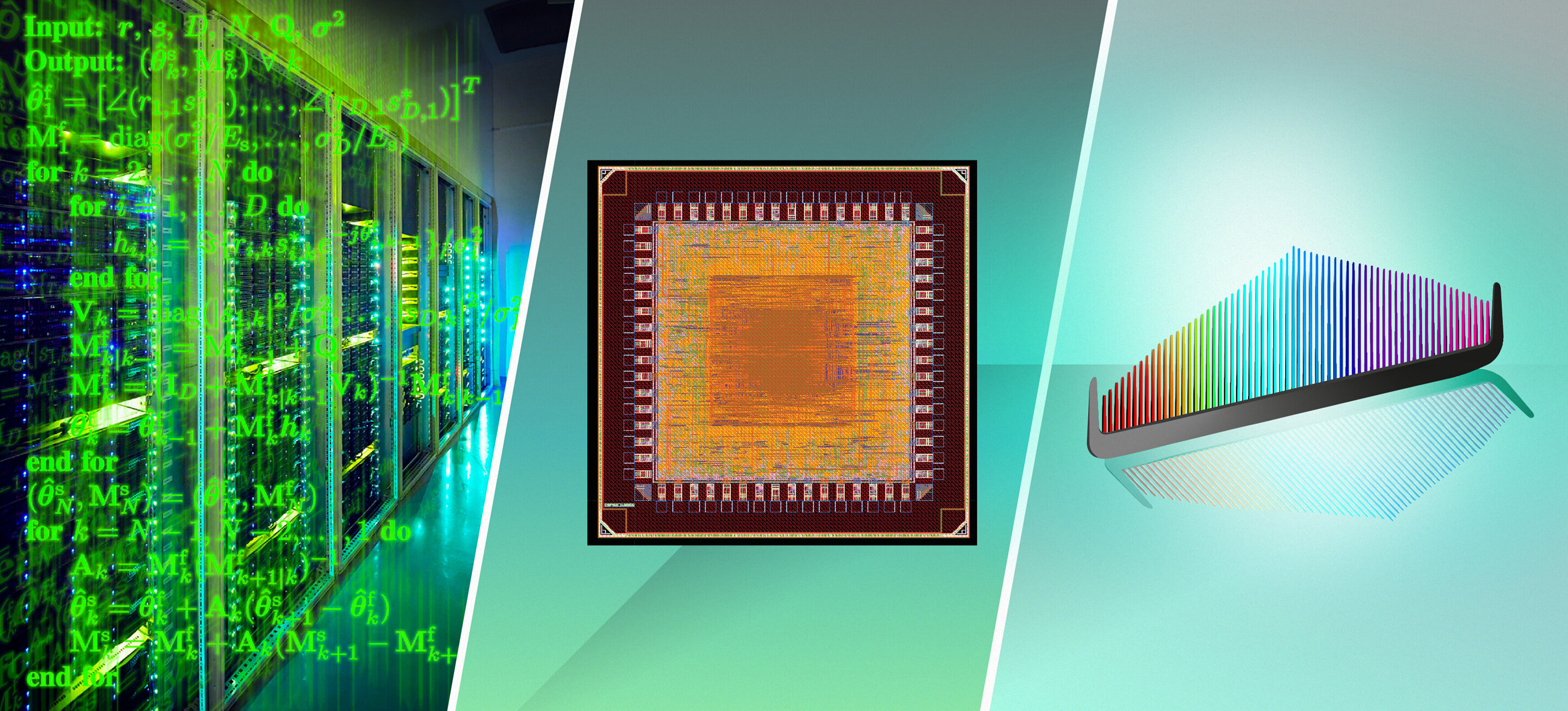
Researchers at Chalmers University of Technology, Sweden, recently completed a five-year research project to make fiber optic communications systems more energy efficient. Among their proposals are smart, error-correcting data chip circuits that consume 10 times less energy. The project has yielded several scientific articles in publications including Nature Communications.
Streaming films and music, scrolling through social media, and using cloud-based storage services are everyday activities now. But to accommodate this digital lifestyle requires transmitting a huge amount of data through fiber optic cables—and that amount is increasing at an almost unimaginable rate, consuming an enormous amount of electricity. This is unsustainable—at the current rate of increase, without energy efficiency gains, within 10 years, the internet alone will consume more electricity than is currently generated worldwide. Electricity production cannot be increased at the same rate without massively increasing the use of fossil fuels for electricity generation, in turn leading to a significant increase in carbon dioxide emissions.
"The challenge lies in meeting that inevitable demand for capacity and performance, while keeping costs at a reasonable level and minimizing the environmental impacts," says Peter Andrekson, professor of photonics at the Department of Microtechnology and Nanoscience at Chalmers.
Andrekson was the leader of the five-year research project, which has contributed significant advances to the field. In the early phase of the project, the Chalmers researchers identified the biggest energy drains in fiber optic systems. With this knowledge, they designed and built a concept for a data transmission system that consumes as little energy as possible. Optimising the components of the system against each other results in significant energy savings.
Currently, some of the most energy-intensive components are error-correction data chips, which are used in optical systems to compensate for noise and interference. The Chalmers researchers have now redesigned these data chips with optimized circuits. "Our measurements show that the energy consumption of our refined chips is around 10 times less than conventional error-correcting chips," says Per Larsson-Edefors, professor in computer engineering at the Department of Computer Science and Engineering at Chalmers.
At a systemic level, the researchers also demonstrated the advantages of using optical frequency combs instead of using separate laser transmitters for each frequency channel. An optical frequency comb emits light at all wavelengths simultaneously, making the transmitter very frequency-stable. This makes reception of the signals much easier—and thus more energy efficient.
Energy savings can also be made through controlling fiber optic communications at the network level. By mathematically modeling the energy consumption in different network resources, data traffic can be controlled and directed so that the resources are used optimally. This is especially valuable if traffic varies over time, as is the case in most networks. For this, the researchers developed an optimization algorithm that can reduce network energy consumption by up to 70%.
The researchers sought the most energy-saving overall solution possible without sacrificing system performance. These research breakthroughs offer great potential for making the internet of the future considerably more energy-efficient. Several scientific articles have been published in the three research disciplines of optical hardware, electronics systems and communication networks.
"Improving the energy efficiency of data transmission requires multidisciplinary competence. The challenges lie at the meeting points between optical hardware, communications science, electronic engineering and more. That's why this project has been so successful," says Erik Agrell, professor in communications systems at the Department of Electrical Engineering at Chalmers.
The research could have huge potential to make internet technologies significantly more energy efficient. It has resulted in several research publications within the three scientific disciplines of optical hardware, electronics systems and communications networks.
More information: Lars Lundberg et al, Phase-coherent lightwave communications with frequency combs, Nature Communications (2020). DOI: 10.1038/s41467-019-14010-7
Christoffer Fougstedt et al. Energy-Efficient High-Throughput VLSI Architectures for Product-Like Codes, Journal of Lightwave Technology (2019). DOI: 10.1109/JLT.2019.2893039
Mohammad Hadi et al. Joint power-efficient traffic shaping and service provisioning for metro elastic optical networks, Journal of Optical Communications and Networking (2019). DOI: 10.1364/JOCN.11.000578
Citation: Making the internet more energy efficient through systemic optimization (2020, February 13) retrieved 13 February 2020 from https://techxplore.com/news/2020-02-internet-energy-efficient-optimization.html
This document is subject to copyright. Apart from any fair dealing for the purpose of private study or research, no part may be reproduced without the written permission. The content is provided for information purposes only.
